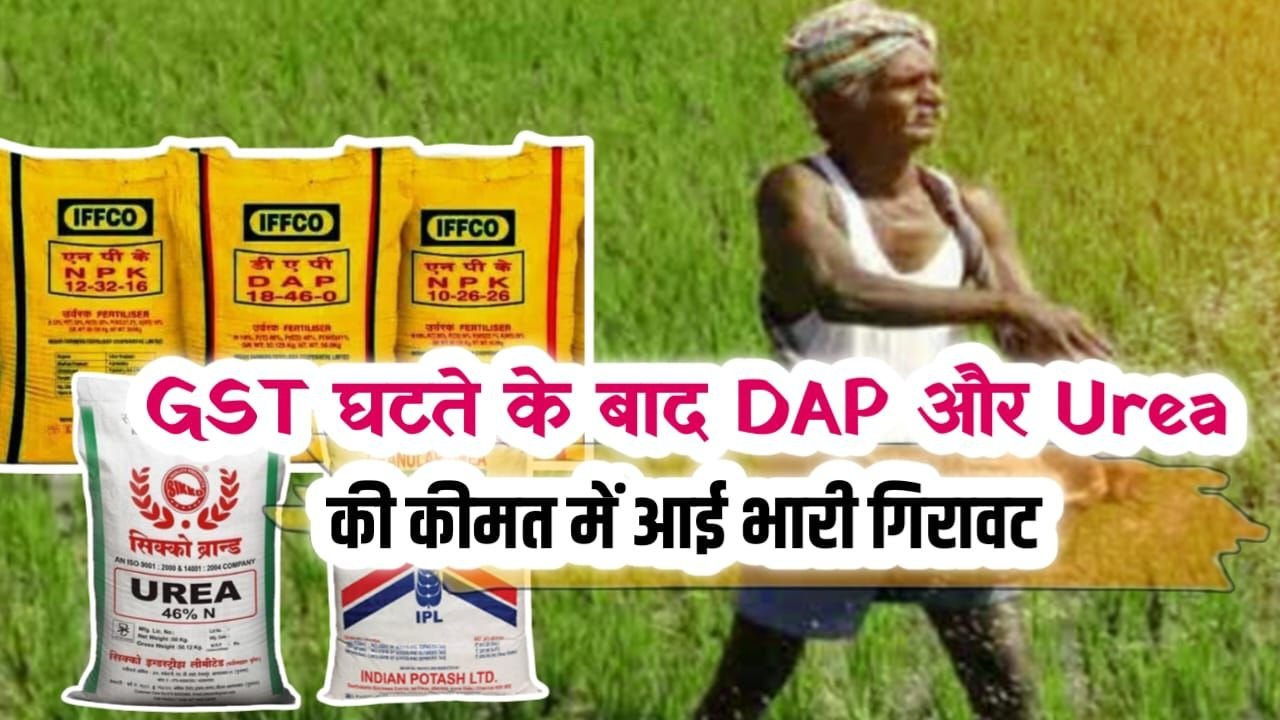Prices for DAP and Urea: For farmers across the country, DAP and Urea are more than just fertilizers; they are the cornerstone of a successful harvest. Recent changes in tax policy have directly impacted the prices of these essential agricultural inputs, bringing a wave of relief to the farming community. This article breaks down the latest pricing and what it means for cultivators.
The Role of DAP and Urea in Agriculture
DAP (Di-ammonium Phosphate) and Urea are fundamental to modern farming. DAP is prized for its high concentration of Phosphorus (46%) and Nitrogen (18%), which are crucial for strong root development and overall plant health. Urea, on the other hand, is a primary source of Nitrogen, a key nutrient that promotes the vigorous growth of stems and leaves. The balanced use of these fertilizers is not just a matter of improving crop yield, but also of maintaining the long-term fertility and quality of the soil. For millions of farmers, their timely availability and affordability directly influence their financial well-being.
A Significant Shift in Pricing Post-GST Revision
The government’s recent decision to revise the Goods and Services Tax (GST) structure on fertilizers has led to a notable decrease in market prices. This move is part of a broader effort to ease the financial burden on farmers and ensure the stability of agricultural production. The change simplifies the tax framework, making these critical inputs more accessible, especially during key sowing seasons.
Current Subsidized Rates for Farmers
Thanks to a robust subsidy mechanism, farmers will continue to purchase these fertilizers at significantly lower rates than the actual production cost. The latest announced prices are as follows:
- A 45 kg bag of Urea will now be available to farmers at a subsidized price ranging between ₹262 and ₹268.
- Similarly, DAP is also being provided at a highly subsidized rate to ensure it remains within reach.
It is important to understand that without government intervention, the actual cost of a bag of DAP could exceed ₹2,500. The subsidy bridge this gap, ensuring that the economic viability of farming is protected.
Ensuring Uninterrupted Supply for the Farming Season
Beyond pricing, the government has also focused on maintaining a steady supply chain. To prevent any shortages in the domestic market, strategic imports of Urea have been managed by government agencies. This proactive measure ensures that farmers do not face disruptions in their agricultural activities due to a lack of essential nutrients for their crops.
Guidance for Farmers
While affordable access is key, using these fertilizers effectively is equally important. Farmers are advised to consult with local agricultural officers to determine the right quantity and timing for applying DAP and Urea based on their specific crop and soil health. This practice of balanced fertilization not only maximizes production but also prevents the overuse that can harm the soil in the long run.
Conclusion: A Supportive Measure for Agriculture
The revision in GST and the continued commitment to subsidies on DAP and Urea represent a significant supportive measure for the agricultural sector. By stabilizing prices and ensuring supply, these policies aim to secure the livelihood of farmers and bolster the nation’s food security. For the most accurate and localized pricing, farmers are encouraged to check with their nearest authorized fertilizer dealers.
Disclaimer: The information provided is based on current announcements and is subject to change. For the most precise and localized pricing, please contact your nearest authorized fertilizer dealer or co-operative society.



